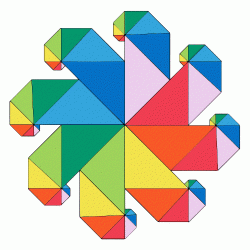I’m coming to understand more of the neurology and psychology of post-trauma, bit by bit. I understand that I have a pattern of being in chronic freeze mode – that any sort of challenge or conflict sends me directly into freeze, where I am in a state of continuously actively numbing myself. And I understand that underneath the freeze or numbness are powerful urges to flee and/or fight. And those urges for positive action are in conflict with the urge to remain motionless at all costs. And that this exhausting battle and stalemate continues perpetually in my bodymind. And I understand that I do not have the required neurological hardware to easily or organically develop and sustain healthy connected safe relationships with anyone – that the lack of healthy attachment bonding as an infant left me without the infrastructure I needed, so I’m working at a deficit in my efforts and wishes to build relationships. And I understand that there is a whole complex of unresolved trauma in my system, which produces a range of neurological and physical symptoms. And that some kinds of activities can mitigate and sometimes suspend those symptoms but that they tend to just keep showing up day by day and hour by hour.
I spent some time this morning reading over my prior blog posts. There is a lot of good information in there, juicy activities and areas of focus for navigating. It’s a lot of pieces but they do not come together as an integrated whole. So either I am still missing pieces or I am missing how they all fit together. The Owner’s Manual would give me that information. It would enumerate the key activities that are required for the care and maintenance of a human life, and it would specifically describe the characteristics and symptoms of a post-developmental trauma life, with detailed and prioritized instructions on how to care for such a life and how to address specific symptoms when they arise. It would assign language to those symptoms, enabling me to unbraid the experience of “I feel stressed, uneasy, anxious and unhappy” into its component parts. And it would provide instructions on how to address each of the root causes in solo, and how to address them when they present and attack in force all at once. What I have now are perspectives, tools and techniques, each and all of which provide me with some benefit and frequently with some relief, but nothing that can map out for me a projected trajectory of my day or week or life framed in terms of the management, abatement, and eventually elimination of these neurological afflictions.
My insight in the past few days is that I am constantly pushing, even when I am consciously and actively engaged in NOT pushing. Is it good pushing or bad pushing? Is it pushing that needs to be released or pushing that needs to be liberated and allowed to move me forward? The labor of childbirth comes to mind as a metaphor, where the pushing is powerfully unpleasant but absolutely helpful and necessary. And the consideration of that level of pushing reminds me again that I experience being chronically alone and without support even though I have broad rich support from a whole range of individuals and communities. That awareness used to be a point of self-criticism – “what is wrong with me that I don’t recognize the support that I have!?” Now that I have answers to that non-rhetorical question, the awareness is neutral observation: I have abundant love and support but I don’t feel it.
Huh. Interesting. An strong and seemingly unrelenting push, and support I can’t feel. Can I/should I look to somehow “let go” and ride the push, gently intuiting the support that I understand is there? Can I/should I allow these energetic contractions to take over my body and do what they want to do? Or maybe not? Is the metaphor wrong? Is there something I need to DO here? Does this energy require a physical outlet, is it the built up stress of not exercising, not moving my body enough? When I was 20 years old I used to run 5 to 10 miles every day, and that helped me to feel better. But just exercising does not feel like the solution to this sensation.
The Owner’s Manual would say, “If you feel a strong and consistent Pushing, then check these diagnostic criteria to determine the nature of the Push and the appropriate supportive action.”

